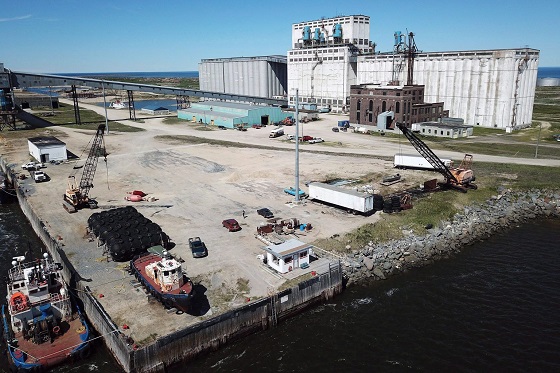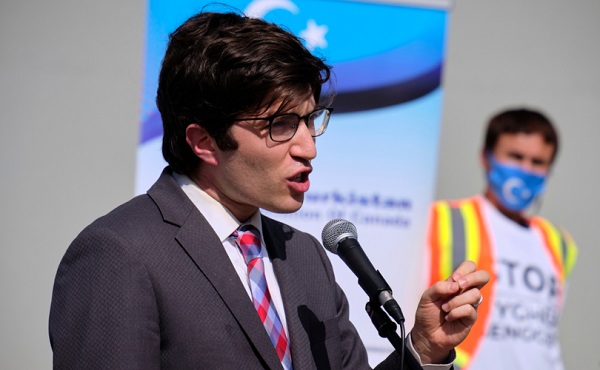Uncategorized
Democrats plan more pressure on Trump to reopen government

WASHINGTON — With no weekend breakthrough to end a prolonged partial government shutdown, President Donald Trump is standing firm in his border wall funding demands and newly empowered House Democrats are planning to step up pressure on Trump and Republican lawmakers to reopen the government.
Trump showed no signs of budging on his demand for more than $5 billion for a wall along the U.S.-Mexico border, though on Sunday he did offer to build it with steel rather than concrete, a concession Democrats panned.
With the shutdown lurching into a third week, many Republicans watched nervously from the sidelines as hundreds of thousands of federal workers went without pay and government disruptions hit the lives of ordinary Americans.
White House officials affirmed Trump’s funding request in a letter to Capitol Hill after a meeting Sunday with senior congressional aides led by
The White House said the letter, as well as details provided during the meeting, sought to answer Democrats’ questions about the funding request. Democrats, though, said the administration still failed to provide a full budget of how it would spend the billions requested for the wall from Congress. Trump campaigned on a promise that Mexico would pay for the wall, but Mexico has refused.
The letter includes a request for $800 million for “urgent humanitarian needs,” a reflection of the growing anxiety over migrants
Trump sought to frame a steel barrier as progress, saying Democrats “don’t like concrete, so we’ll give them steel.” The president has already suggested his definition of the wall is flexible, but Democrats have made clear they see a wall as immoral and ineffective and prefer other types of border security funded at already agreed upon levels.
House Speaker Nancy Pelosi intends to begin passing individual bills to reopen agencies in the coming days, starting with the Treasury Department to ensure people receive their tax refunds. That effort is designed to squeeze Senate Republicans, some of whom are growing increasingly anxious about the extended shutdown.
Among the Republicans expressing concerns was Sen. Susan Collins, R-Maine, who said Senate Majority Leader Mitch McConnell should take up bills from the Democratic-led House.
“Let’s get those reopened while the negotiations continue,” Collins said on NBC’s “Meet the Press.”
Adding to concerns, federal workers might miss this week’s paychecks. Acting chief of staff Mick Mulvaney said on NBC’s “Meet the Press” that if the shutdown continues into Tuesday, “then payroll will not go out as originally planned on Friday night.”
Trump reaffirmed that he would consider declaring a national emergency to circumvent Congress and spend money as he saw fit. Such a move would seem certain to draw legal challenges.
Incoming House Armed Services Committee Chairman Adam Smith, D-Wash., said on ABC’s “This Week” that the executive power has been used to build military facilities in Iraq and Afghanistan but would likely be “wide open” to a court challenge for a border wall. Speaking on CNN’s “State of the Union,” Intelligence Committee Chairman Adam Schiff called the idea a “nonstarter.”
Trump also asserted that he could relate to the plight of the hundreds of thousands of federal workers who aren’t getting paid, though he acknowledged they will have to “make adjustments” to deal with the shutdown shortfall.
___
Associated Press writer Julie Walker in New York, Jill Colvin in Washington and Elliot Spagat in San Diego contributed to this report.
Catherine Lucey And Lisa Mascaro, The Associated Press
Uncategorized
Cost of bureaucracy balloons 80 per cent in 10 years: Public Accounts

The cost of the bureaucracy increased by $6 billion last year, according to newly released numbers in Public Accounts disclosures. The Canadian Taxpayers Federation is calling on Prime Minister Mark Carney to immediately shrink the bureaucracy.
“The Public Accounts show the cost of the federal bureaucracy is out of control,” said Franco Terrazzano, CTF Federal Director. “Tinkering around the edges won’t cut it, Carney needs to take urgent action to shrink the bloated federal bureaucracy.”
The federal bureaucracy cost taxpayers $71.4 billion in 2024-25, according to the Public Accounts. The cost of the federal bureaucracy increased by $6 billion, or more than nine per cent, over the last year.
The federal bureaucracy cost taxpayers $39.6 billion in 2015-16, according to the Public Accounts. That means the cost of the federal bureaucracy increased 80 per cent over the last 10 years. The government added 99,000 extra bureaucrats between 2015-16 and 2024-25.
Half of Canadians say federal services have gotten worse since 2016, despite the massive increase in the federal bureaucracy, according to a Leger poll.
Not only has the size of the bureaucracy increased, the cost of consultants, contractors and outsourcing has increased as well. The government spent $23.1 billion on “professional and special services” last year, according to the Public Accounts. That’s an 11 per cent increase over the previous year. The government’s spending on professional and special services more than doubled since 2015-16.
“Taxpayers should not be paying way more for in-house government bureaucrats and way more for outside help,” Terrazzano said. “Mere promises to find minor savings in the federal bureaucracy won’t fix Canada’s finances.
“Taxpayers need Carney to take urgent action and significantly cut the number of bureaucrats now.”
Table: Cost of bureaucracy and professional and special services, Public Accounts
| Year | Bureaucracy | Professional and special services |
|
$71,369,677,000 |
$23,145,218,000 |
|
|
$65,326,643,000 |
$20,771,477,000 |
|
|
$56,467,851,000 |
$18,591,373,000 |
|
|
$60,676,243,000 |
$17,511,078,000 |
|
|
$52,984,272,000 |
$14,720,455,000 |
|
|
$46,349,166,000 |
$13,334,341,000 |
|
|
$46,131,628,000 |
$12,940,395,000 |
|
|
$45,262,821,000 |
$12,950,619,000 |
|
|
$38,909,594,000 |
$11,910,257,000 |
|
|
$39,616,656,000 |
$11,082,974,000 |
Uncategorized
Trump Admin Establishing Council To Make Buildings Beautiful Again


From the Daily Caller News Foundation
By Jason Hopkins
The Trump administration is creating a first-of-its-kind task force aimed at ushering in a new “Golden Age” of beautiful infrastructure across the U.S.
The Department of Transportation (DOT) will announce the establishment of the Beautifying Transportation Infrastructure Council (BTIC) on Thursday, the Daily Caller News Foundation exclusively learned. The BTIC seeks to advise Transportation Secretary Sean Duffy on design and policy ideas for key infrastructure projects, including highways, bridges and transit hubs.
“What happened to our country’s proud tradition of building great, big, beautiful things?” Duffy said in a statement shared with the DCNF. “It’s time the design for America’s latest infrastructure projects reflects our nation’s strength, pride, and promise.”
“We’re engaging the best and brightest minds in architectural design and engineering to make beautiful structures that move you and bring about a new Golden Age of Transportation,” Duffy continued.
Mini scoop – here is the DOT’s rollout of its Beautifying Transportation Infrastructure Council, which will be tasked with making our buildings beautiful again. pic.twitter.com/
9iV2xSxdJM — Jason Hopkins (@jasonhopkinsdc) October 23, 2025
The DOT is encouraging nominations of the country’s best architects, urban planners, artists and others to serve on the council, according to the department. While ensuring that efficiency and safety remain a top priority, the BTIC will provide guidance on projects that “enhance” public areas and develop aesthetic performance metrics.
The new council aligns with an executive order signed by President Donald Trump in August 2025 regarding infrastructure. The “Making Federal Architecture Beautiful Again” order calls for federal public buildings in the country to “respect regional architectural heritage” and aims to prevent federal construction projects from using modernist and brutalist architecture styles, instead returning to a classical style.
“The Founders, in line with great societies before them, attached great importance to Federal civic architecture,” Trump’s order stated. “They wanted America’s public buildings to inspire the American people and encourage civic virtue.”
“President George Washington and Secretary of State Thomas Jefferson consciously modeled the most important buildings in Washington, D.C., on the classical architecture of ancient Athens and Rome,” the order continued. “Because of their proven ability to meet these requirements, classical and traditional architecture are preferred modes of architectural design.”
The DOT invested millions in major infrastructure projects since Trump’s return to the White House. Duffy announced in August a $43 million transformation initiative of the New York Penn Station in New York City and in September unveiledmajor progress in the rehabilitation and modernization of Washington Union Station in Washington, D.C.
The BTIC will comprise up to 11 members who will serve two-year terms, with the chance to be reappointed, according to the DOT. The task force will meet biannually. The deadline for nominations will end Nov. 21.
-

 Business1 day ago
Business1 day agoNew airline compensation rules could threaten regional travel and push up ticket prices
-

 Great Reset2 days ago
Great Reset2 days agoEXCLUSIVE: The Nova Scotia RCMP Veterans’ Association IS TARGETING VETERANS with Euthanasia
-

 Crime1 day ago
Crime1 day agoHow Global Organized Crime Took Root In Canada
-

 Digital ID2 days ago
Digital ID2 days agoLeslyn Lewis urges fellow MPs to oppose Liberal push for mandatory digital IDs
-

 Digital ID1 day ago
Digital ID1 day agoRoblox to Mandate Facial and ID Verification
-

 Business1 day ago
Business1 day agoWill the Port of Churchill ever cease to be a dream?
-

 Health2 days ago
Health2 days agoDisabled Canadians petition Parliament to reverse MAiD for non-terminal conditions
-

 Business1 day ago
Business1 day agoThe numbers Canada uses to set policy don’t add up










